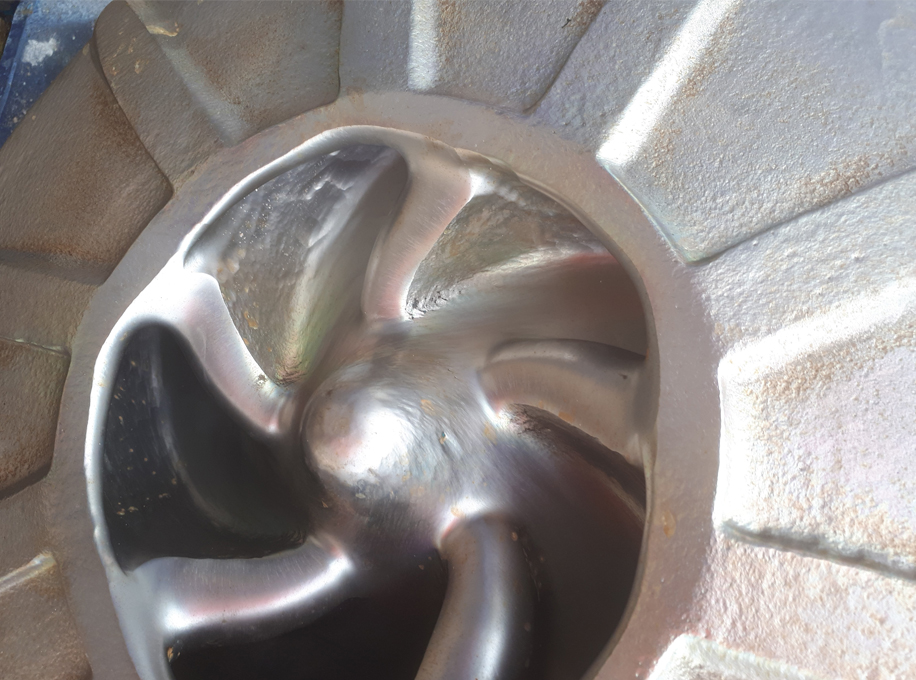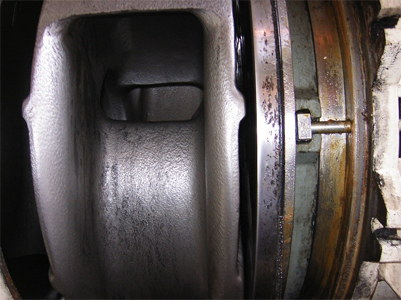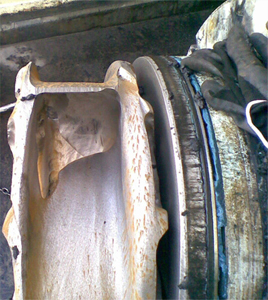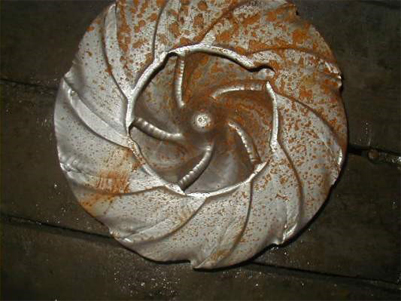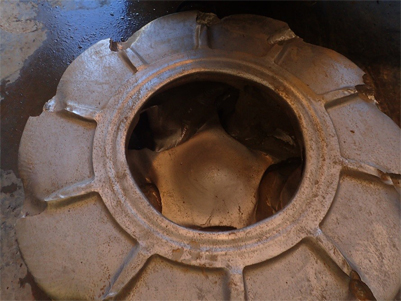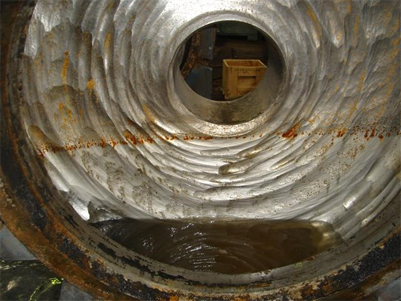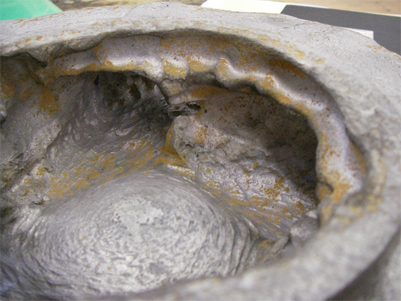Particle size
The two main mechanisms for wear of hard iron parts are impact and sliding abrasion. Sliding bed is defined by a smooth, polished surface (figure 5). Sometimes the surface develops a distinctive pattern like sand dunes (Wilson, 2006) It has been suggested that the wavelength of these dunes correlates with the particle size of the slurry (Walker, 2016)
As the particle size increases the coarse particles push through this bed and cause damage by impact. This is a much more damaging mechanism, and impact wear will result in much faster material loss. The surface will not be as smooth and may develop a frosted appearance. (Wilson, 2006)

